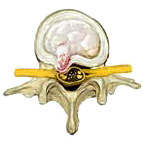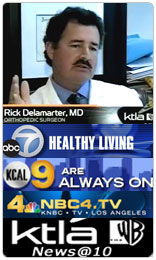Did you know?
If you can answer yes to any of the following questions, you should consult a spine specialist:- Has your low back pain extended down your leg?
- Does your leg pain increase if you lift your knee to your chest or bend over?
- Have you had severe back pain following a recent fall?
- Have you had significant back pain lasting for more than 3 weeks?
- Have you had back pain that becomes worse when you rest, or wakes you up at night?
- Do you have persistent bladder or bowel problems?
Health Facts

Back pain is often caused by obesity
Most people know that obesity contributes to the development of various diseases. However, did you know that obesity is a contributing factor to back pain? It is true. Being overweight or obese can significantly contribute to osteoporosis, osteoarthritis, rheumatoid arthritis, degenerative disc disease, spinal stenosis, and spondylolisthesis.
Introduction to Low Back Pain
 Low back pain can come in a variety of forms. Pain in the lumbar (waist) area of the back can be described as sharp, sudden, dull, or constant.
Low back pain can come in a variety of forms. Pain in the lumbar (waist) area of the back can be described as sharp, sudden, dull, or constant.
The spine is made up of vertebrae (bones), cartilaginous cushions known as discs, and nerve roots; any of these components can be the source of pain. The pain can result from a sudden injury or from gradual wear with age and repetitive strain.
Symptoms of a Low Back Pain
 You may feel a variety of symptoms if you've hurt your back. You may have a tingling or burning sensation, a dull aching, or sharp pain. You also may experience weakness in your legs or feet.
You may feel a variety of symptoms if you've hurt your back. You may have a tingling or burning sensation, a dull aching, or sharp pain. You also may experience weakness in your legs or feet.
It won't necessarily be one event that actually causes your pain. You may have been doing many things improperly -- like standing, sitting, or lifting -- for a long time. Then suddenly, one simple movement, like reaching for something in the shower or bending from your waist, leads to the feeling of pain.
Most back problems will get better on their own. The key is to know when you need to seek medical help and when self-care measures alone will allow you to get better.
Low back pain may be acute (short-term), lasting less than one month, or chronic (long-term, continuous, ongoing), lasting longer than three months. While getting acute back pain more than once is common, continuous long-term pain is not. Common causes of low back pain are herniated disc, degenerative disc disease, spinal stenosis, and spondylolisthesis.
Treatment Options for Low Back Pain
Most low back pain is not serious and can be treated safely and effectively by non-surgical methods. Depending on your condition, you may be referred to a physiatrist, a physician who specializes in physical medicine and rehabilitation, for non-surgical treatment. You may be asked to modify your activities for a short time period. It is likely however, that proper exercise will be encouraged because studies show that activity contributes to recovery.
Pain medication may be prescribed to help relieve pain. Once improvement is shown, a rehabilitation program may be prescribed to build muscle strength. You will also be instructed on posture, proper lifting and preventing further injuries.
Some conditions do not respond to non-surgical treatment. Surgical procedures may be indicated to relieve irritation or compression of the spinal nerves. The surgeon may remove part of the bony vertebrae (laminectomy/laminotomy), part of the damaged disc (discectomy) or both. For patients with instability, a fusion may be performed.
| Conservative Treatments : | ||||
• |
Medications | |||
• |
Acupuncture | |||
• |
Physical Therapy | |||
| Surgical Treatments : | ||||
• |
laminectomy | |||
• |
Spinal Fusion | |||
Did you know The Spine Institute conducts clinical trials?

Most advances in the diagnosis, treatment, and care of patients with spine injury or disease have occurred because of clinical trials. Examples include improved diagnostic tests that allow for earlier treatment, increased knowledge and education regarding risk factors, and experimental treatments. The results of many clinical trials have contributed to health care professionals finding better ways to treat injury or diseases of the spine.
If you have back pain don't put off treatment any longer, contact the spine care specialist at The Spine Institute today.
Latest news
Visit our media library for access to all of our news videos.
The Spine Institute is often in the news pioneering new treatments to help the reported 34 million Americans 18 years and older who suffer lower back pain, and another 9 million who suffer neck pain. Watch the news coverage here.
